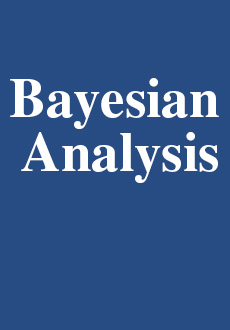Abstract
Decoding complex relationships among large numbers of variables with relatively few observations is one of the crucial issues in science. One approach to this problem is Gaussian graphical modeling, which describes conditional independence of variables through the presence or absence of edges in the underlying graph. In this paper, we introduce a novel and efficient Bayesian framework for Gaussian graphical model determination which is a trans-dimensional Markov Chain Monte Carlo (MCMC) approach based on a continuous-time birth-death process. We cover the theory and computational details of the method. It is easy to implement and computationally feasible for high-dimensional graphs. We show our method outperforms alternative Bayesian approaches in terms of convergence, mixing in the graph space and computing time. Unlike frequentist approaches, it gives a principled and, in practice, sensible approach for structure learning. We illustrate the efficiency of the method on a broad range of simulated data. We then apply the method on large-scale real applications from human and mammary gland gene expression studies to show its empirical usefulness. In addition, we implemented the method in the R package BDgraph which is freely available at http://CRAN.R-project.org/package=BDgraph.
Citation
A. Mohammadi. E. C. Wit. "Bayesian Structure Learning in Sparse Gaussian Graphical Models." Bayesian Anal. 10 (1) 109 - 138, March 2015. https://doi.org/10.1214/14-BA889
Information





